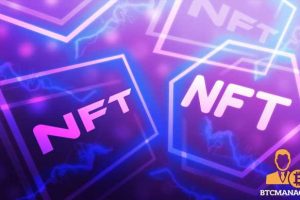Here’s How Hoard Is Trying to Revolutionize NFT Industry

Non-fungible tokens (NFTs) are becoming a staple in the post-pandemic world, and people need markets to safely trade and buy these precious items. One of the most popular sectors in the “new normal” type of the world – gaming – is a multibillionaire one, and the publishers make strict rules on what users can do.
Hoard Marketplace, launched on Ethereum Mainnet to allow users to trade, buy, sell, loan, or NFTs, has the main aim to provide gamers with true ownership of their gaming assets. Hoard promises that by building an infrastructure for game developers to tokenize all aspects of their games on a blockchain, gamers will finally own what they pay.
Who’s Behind the Project
Hoard was launched by a team of visionaries who promise low fees and support advanced DeFi liquidity services. Radek Zagórowicz, the CEO of Hoard, believes this is the first step of further development of novel NFTs functionalities/utilities. Its principal functionality is to enable NFTs to be used as collateral to obtain loans in cryptocurrency.
The mathematician started as a software developer at Samsung, but now his work is focused on crypto and blockchain-related IT services. He is also a board member at Imapp. As Hoard’s Gamadev Relations head, they have a veteran in the gaming industry, Sławomir Bubel. His portfolio includes porting games like Ultra Street Fighter IV and Dark Souls: Remastered, while also leading teams of more than 100 developers and designers.
The lead programmer is Cyryl Matuszewski, experienced in porting and optimizing engines like the MT Framework and RED Engine. His work was integral in games like The Witcher 2, Remember Me, and Mortal Kombat X. Kuba Lesisz is also a Hoard Co-Founder, and a systems architect, and a Microsoft stack developer.
The Mission
Founders developed Hoard so users could trade, buy, sell, loan, or rent non-fungible tokens (NFTs), like in-game items, digital art, and domain names. The platform was intended to be built, so users own and govern it in the DAO model (decentralized autonomous organization).
The design of the interface is so sleek and simple that even beginners can use it without trouble. The current version supports loans in five ERC20 tokens; HRD, DAI, USDT, USDC, BUSD.
The platform also has a native token, HRD, which is listed on the HRD on the Estonian P2PB2B exchange. The total supply is 1 billion, with 48% set to be distributed to the community. Token holders can transact, stake to receive compensation and vote. On decentralized exchanges, token holders can also become HRD liquidity providers. A token sale and staking (unless the community chooses otherwise) are the initial sources of income.
Different types of NFTs have been introduced to the platform like CryptoKitties, Axie Infinity, Rarible, Superrare. One would ask – if platforms such as DeFi, Uniswao, Ethereum Compount, Aave, yearn finance are similar, how is Hoard different? As on the other platforms, there’s a lender, borrower and staker.
Since the launch, Borrowers can utilize their NFTs to obtain loans, and Lenders can put their cryptocurrencies to good use and generate extra profits, while the Stake service will allow all users to leverage double benefits from their HRD tokens.
Users can buy HRD, add liquidity to the ETH/HRD trading pool on Uniswap and then stake UNIV2 tokens on the Hoard Marketplace; which will produce rewards on both the Uniswap and Hoard platforms.
Things are changing for NFT holders, and new possibilities are opening every day.
Related posts:
Source: Read Full Article
